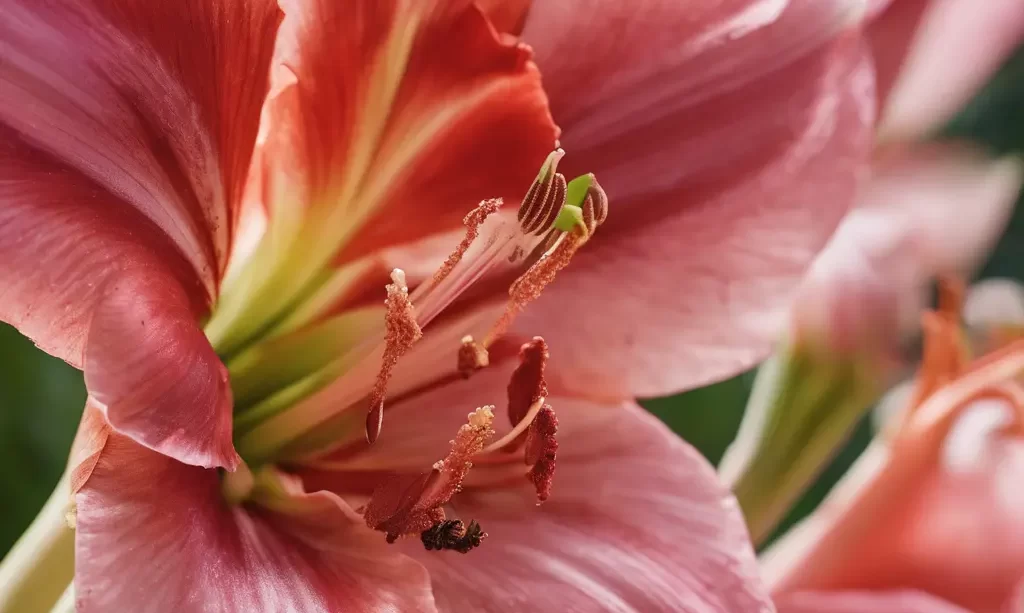The Amaryllis belladonna, more commonly known as the Naked Lady plant, is a striking addition to any garden. Renowned for its vibrant, trumpet-shaped flowers that bloom atop tall, leafless stems, this plant presents a unique visual appeal. Originating from South Africa, Naked Ladies are not only beautiful but also relatively easy to grow, making them a favorite among garden enthusiasts of all levels. This article will guide you through the optimal planting time and methods for these exquisite bulbs.
Naked Lady Bulbs
Naked Lady bulbs are large, with a typical diameter ranging from two to three inches. They are known for their resilience and long life span. The plant gets its common name from its unusual growth pattern – the flowers bloom in late summer or early fall, on bare stems with no accompanying leaves, giving the appearance of ‘nakedness’. The leaves do grow, but they appear after the flowers have withered, remaining through winter and spring before dying back in early summer.
Ideal Planting Time
The perfect time to plant Naked Lady bulbs is generally in late summer or early fall. This timing allows the bulbs to establish themselves before the winter. In warmer climates, September to October is ideal, but this may shift to August in cooler regions. The key is to plant them after the heat of summer has passed but well before the ground freezes. This period gives the bulbs sufficient time to develop a robust root system, crucial for healthy growth and vibrant blooms in the following season.
Soil Preparation and Planting Depth
For successful growth, Naked Lady bulbs thrive in well-drained soil. They prefer a sunny location but can tolerate partial shade. Before planting, enrich the soil with organic matter like compost or aged manure to improve drainage and nutrient content. A slightly acidic to neutral pH is ideal for these bulbs.
When planting, set the bulbs with their tops just below the soil surface, about 4-6 inches deep. This depth ensures adequate root growth while preventing the bulbs from being too deep, which can impede flowering. Space the bulbs about 12 inches apart to give each plant enough room to grow without competition for nutrients and water.
Climate Considerations
Naked Lady bulbs are hardy and adaptable to various climates, but they perform best in USDA hardiness zones 7 through 10. In colder climates (zones 5 and 6), consider planting the bulbs deeper (about 6-8 inches) to protect them from freezing temperatures. In these regions, a layer of mulch over the planting site can provide additional insulation during winter.
For gardeners in particularly hot and dry areas, it’s important to ensure that the bulbs receive adequate moisture during their growing period in the spring. However, once the foliage begins to die back in early summer, reduce watering to mimic the plant’s natural dry dormant period.
After Planting Care
Immediately after planting, water the bulbs thoroughly to settle the soil around them. This initial watering is crucial for encouraging the bulbs to start developing roots. In the following weeks, maintain a regular watering schedule, keeping the soil moist but not waterlogged. Overwatering can lead to bulb rot, a common issue with Naked Lady plants.
Fertilization is not typically necessary at planting time, but a balanced slow-release fertilizer can be applied in the spring when the leaves are actively growing. This additional nutrient boost helps promote healthy foliage, which is essential for the plant to gather energy for the next flowering season.
Year-Round Care
Caring for Naked Lady bulbs throughout the year is relatively straightforward. After the blooming period, it’s important to leave the foliage intact. The leaves are essential for photosynthesis, which helps the bulb store energy for the next flowering cycle. Resist the urge to trim back the leaves until they yellow and wither naturally, usually by early summer.
During the dormant period, which occurs after the leaves die back, the bulbs require little to no water. This rest period is critical for the health of the plant. Over-watering during dormancy can lead to bulb rot. If your area receives ample rainfall, consider planting Naked Ladies in a raised bed or slope to ensure adequate drainage.
In regions with harsh winters, applying a layer of mulch after the ground freezes can help protect the bulbs from extreme cold. Remove the mulch in early spring, once the threat of hard frost has passed, to prevent overheating and allow new growth to emerge easily.
Conclusion
The Amaryllis belladonna, with its distinctive beauty and easy-care nature, is a wonderful addition to any garden. By planting Naked Lady bulbs at the right time and providing them with the proper care, you can enjoy their spectacular blooms year after year. Remember, the key to a flourishing display lies in understanding their growth cycle and meeting their basic needs. With these guidelines, you’re well-equipped to grow these enchanting flowers and add a touch of elegance to your outdoor space.



